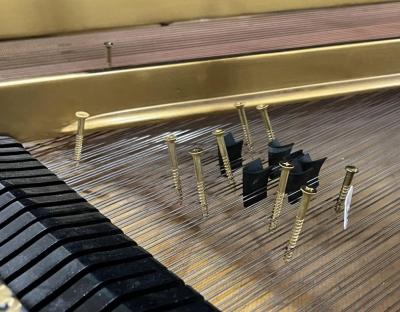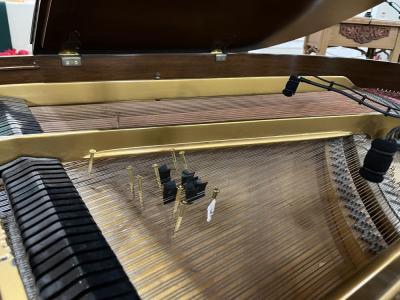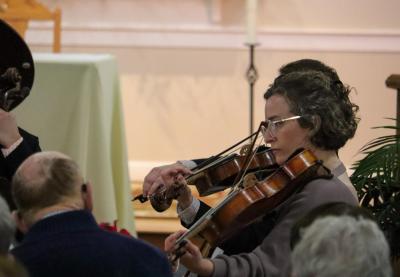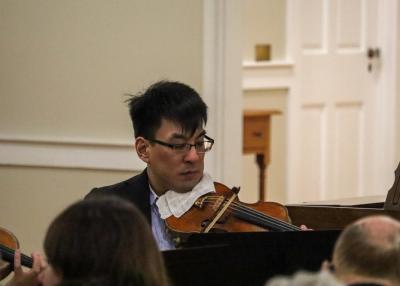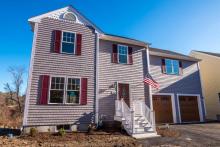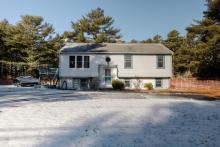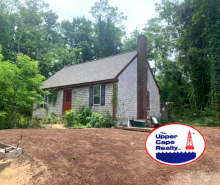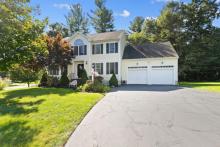The viola takes center stage in latest Chamber Music Series at St. Peter’s
In a full symphony orchestra, the violas are the “glue” that binds the strings together, said violist Anna Griffis. So to have two violas in a string quintet, “it’s all that much more glue,” she said. “It’s really rich, really lush.”
That richness of sound was on full display Sunday, Feb. 4, in St. Peter’s Episcopal Church, where members of the New Bedford Symphony Orchestra played an intimate chamber show for a small crowd.
The church has been a regular, monthly performance space for the 2023-2024 South Coast Chamber Music series, along with St. Gabriel’s Episcopal Church in Marion.
February’s contribution to the series was “Viva Viola,” which brought in two violinists, two violists and one cellist to perform two Romantic period pieces, one by Felix Mendelssohn and the other by Antonín Dvořák. Composing the quintet was Griffis, along with violinist Ethan Wood, violinist EmmaLee Holmes-Hicks, violist Chrisopher Nunn and cellist Leo Aguchi.
The chamber series provides a more intimate setting to see New Bedford Symphony Orchestra players live, facilitating “a more intimate connection” between the musicians and the audience, Holmes-Hicks said.
Both of the pieces played Sunday feel like “finishers,” she said, and could easily serve as a finale for the show: “There’s very big roles for all of us in the show.”
Separating the two performances was a “palette cleanser” of sorts, as pianist and artistic director Janice Weber described it. Weber herself played excerpts from an experimental piano composition written by avant-garde composer John Cage, called “Sonatas and Interludes for Prepared Piano.”
Preparing the “prepared piano” involves weaving sound-distorting objects into the piano wires of certain keys, including folded pieces of rubber, metal screws and little bits of plastic. Though Cage gives detailed instructions for preparation, Weber said every piano is different, so she needs to adjust the items’ positioning until she gets the right sound.
The process turns the piano into more of a percussion instrument.
“He really did create a new instrument,” Wood said. “[The additions] enhance the original notes of the piano in not a pattern of ways … He had to relearn the language and then create an art out of this medium.”
Cage’s prepared piano is often a logistical challenge as well, Wood said, as the piano is typically needed for the rest of the show. But as a complement to a string quartet, the prepared piano gets a chance to shine.
Cathy Lanier, from Westport, said she and her husband really enjoyed the prepared piano: “It was probably the most accessible Cage we’ve heard.”
“I thought it was going to be craziness, but I was fascinated,” said Sandria Parsons, chair of the New Bedford Symphony Orchestra’s Board of Trustees. “Cage is saying to us, ‘What is music? What is piano music?’”
Parsons saw the Saturday show in Marion, but came to Dartmouth just to see the Cage and Dvořák pieces for a second time.
“We have the great privilege of hearing our principal players of the New Bedford Symphony playing in the intimate setting of a chamber series,” Parsons said.
The next Chamber Music Series show, “Trifecta,” will take place March 9 and 10 in the same locations.




